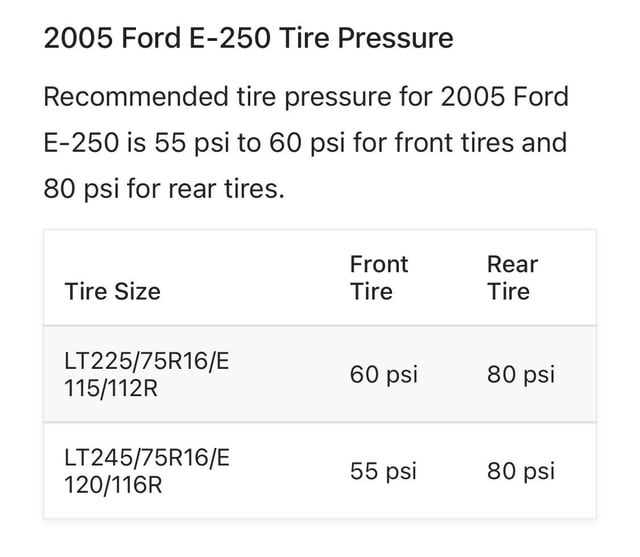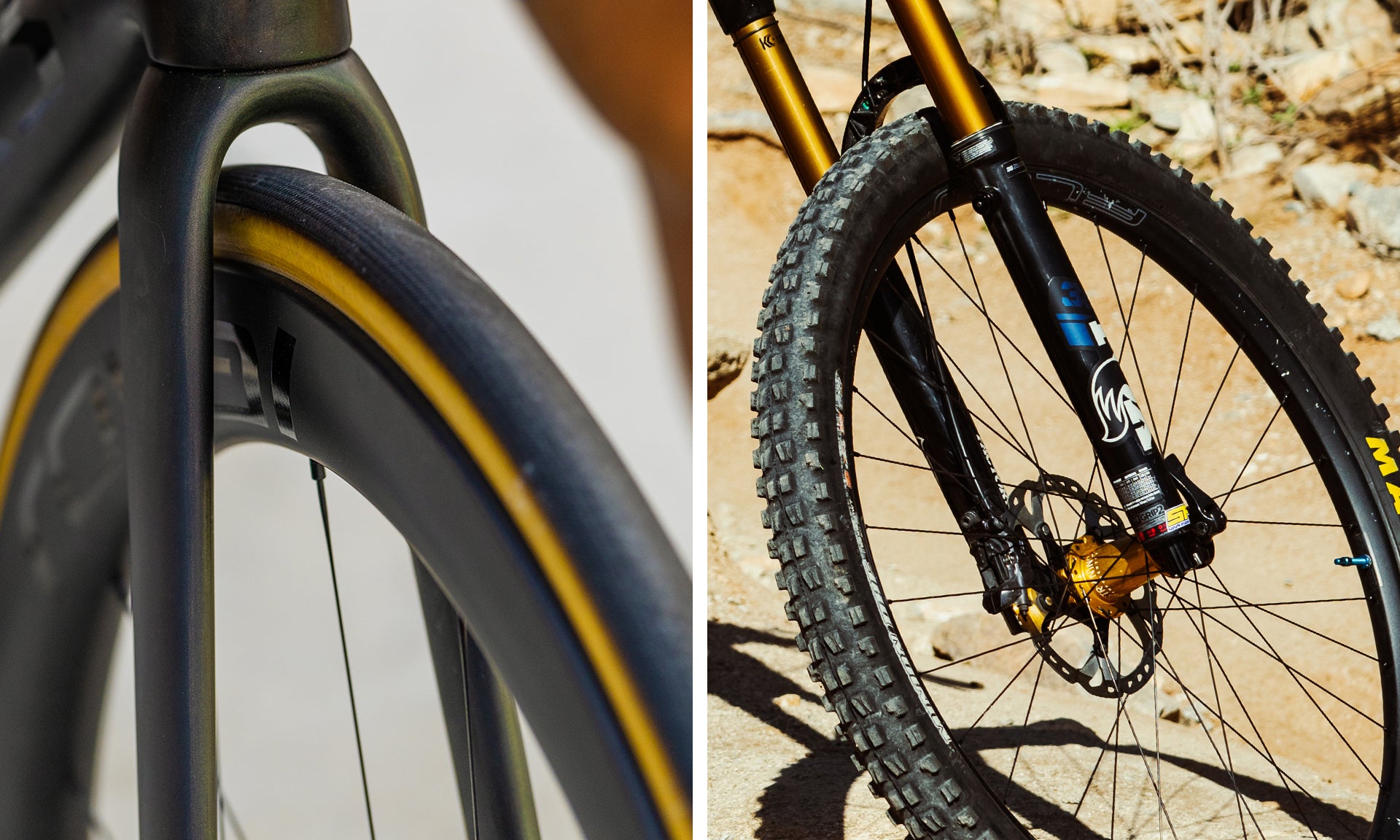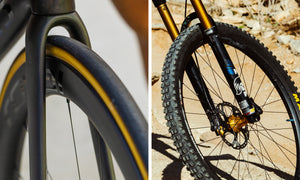Running 80 psi tires at 65 psi can lead to reduced stability, traction, and fuel efficiency. It may also cause premature wear and tear on the tires, affecting their overall lifespan.
Maintaining the correct tire pressure is crucial for safe and efficient driving. Properly inflated tires ensure optimal handling, braking, and fuel economy. Apart from safety concerns, underinflated tires can also cause uneven tread wear and decrease the lifespan of the tire.
Conversely, overinflated tires may lead to reduced traction and a harsher ride. Finding the right balance is essential for extending tire life and ensuring a smooth, safe driving experience. It’s advisable to regularly check your tire pressure and adjust it according to the manufacturer’s recommendations for optimal performance.

- 1. Importance Of Optimal Tire Pressure
- 2. Understanding Tire Pressure Ratings
- 3. Risks Of Running 80 Psi Tires At 65 Psi
- 4. Benefits Of Optimal Tire Pressure
- 5. How To Determine The Optimal Tire Pressure
- 6. Steps To Adjust Tire Pressure
- 7. Common Myths About Tire Pressure
- 8. Tips For Proper Tire Pressure Maintenance
- Frequently Asked Questions On Running 80 Psi Tires At 65 Psi
- Conclusion
1. Importance Of Optimal Tire Pressure
When it comes to maintaining your vehicle, optimal tire pressure is crucial. Running your tires at the right psi not only ensures a smoother ride but also impacts safety, fuel efficiency, and overall tire lifespan. Let’s take a closer look at the importance of maintaining optimal tire pressure.
1.1 Improved Safety
Proper tire pressure is directly correlated with safety on the road. When tires are underinflated, they are more prone to overheating and potential blowouts, especially at higher speeds. On the other hand, overinflated tires can reduce the contact patch with the road, leading to less traction and control. By maintaining the recommended tire pressure, drivers can significantly reduce the risk of accidents and unexpected tire failures.
1.2 Better Fuel Efficiency
Optimal tire pressure is key to maximizing fuel efficiency. Underinflated tires increase rolling resistance, causing the vehicle’s engine to work harder and consume more fuel. This results in decreased miles per gallon and higher fuel costs. On the other hand, properly inflated tires reduce rolling resistance, promoting better fuel economy and ultimately saving money at the pump.
1.3 Extended Tire Lifespan
Maintaining the right tire pressure helps in extending the lifespan of your tires. Underinflated tires wear out unevenly, primarily on the edges, due to increased flexing and heat buildup. Conversely, overinflated tires wear out more in the center. By adhering to the recommended tire pressure, drivers can ensure that their tires wear evenly, promoting longer-lasting tread and overall durability.
2. Understanding Tire Pressure Ratings
2. Understanding Tire Pressure Ratings
2.1 The Psi Measurement
When checking tire pressure, the term PSI often comes up. PSI stands for “pounds per square inch,” and it refers to the amount of air pressure within the tire. This measurement is instrumental in determining the proper inflation levels for the tires. In essence, PSI is a crucial factor that directly impacts the overall performance and safety of your vehicle. By understanding the significance of PSI, you can ensure that your tires are properly inflated, thereby enhancing both efficiency and safety.
2.2 Recommended Tire Pressure
Knowing the recommended tire pressure for your vehicle is vital for maintaining the optimal performance and longevity of the tires. The recommended PSI for your specific vehicle can typically be found in the owner’s manual or on a label inside the driver’s door. It’s important to adhere to these recommendations to achieve the best traction, fuel efficiency, and overall handling of your vehicle. Failing to maintain the recommended tire pressure can lead to premature wear, reduced fuel efficiency, and compromised safety on the road.
2.3 Over-inflation Vs. Under-inflation
Understanding the implications of over-inflating or under-inflating your tires is crucial. Over-inflation can lead to a harsher ride and uneven tire wear, while under-inflation can result in decreased fuel efficiency, compromised handling, and an increased risk of tire failure due to overheating. Therefore, it is essential to maintain the tire pressure at the recommended level to ensure optimal performance, safety, and longevity of the tires.
3. Risks Of Running 80 Psi Tires At 65 Psi
Running 80 PSI tires at a lower pressure of 65 PSI might seem like a convenient solution, but it comes with several risks. It’s important to understand these risks in order to make informed decisions about tire maintenance and ensure safety on the road.
3.1 Decreased Handling Performance
Decreasing the tire pressure from the recommended 80 PSI to 65 PSI can significantly impact the handling performance of your vehicle. The lower pressure can cause the tires to feel softer and more prone to sidewall flexing, resulting in reduced stability and responsiveness while steering.
This decreased handling performance not only affects the overall driving experience but can also compromise your ability to safely navigate turns and corners. It’s essential to maintain the recommended tire pressure to ensure optimal handling and control of your vehicle.
3.2 Increased Braking Distance
Running your tires at a lower pressure than recommended can also lead to increased braking distances. The tires’ reduced contact with the road surface due to lower pressure limits their ability to grip the road effectively.
This increased braking distance can be particularly dangerous in emergency situations where every inch counts. As a result, stopping your vehicle quickly and efficiently becomes more challenging, putting you and your passengers at a higher risk of collision.
3.3 Uneven Tire Wear
Running 80 PSI tires at 65 PSI can lead to uneven tire wear patterns. The lower pressure causes the tire to shift and distribute weight differently, leading to uneven tread wear across the tire’s surface.
This uneven tire wear not only reduces the tire’s longevity but can also impact its overall performance. Unevenly worn tires are more prone to unexpected blowouts, reducing the stability and safety of your vehicle. Maintaining the recommended tire pressure helps ensure even wear and prolongs the life of your tires.

Credit: www.theproscloset.com
4. Benefits Of Optimal Tire Pressure
4. Benefits of Optimal Tire Pressure:
4.1 Improved Vehicle Control
Proper tire pressure enhances steering responsiveness. It helps prevent accidents due to better handling.
4.2 Enhanced Traction
Maintaining correct tire pressure improves grip on the road. It reduces the risk of skidding.
4.3 Optimal Tread Contact
Correct tire pressure ensures even tread wear. It maximizes tire contact with the road surface.
5. How To Determine The Optimal Tire Pressure
Ensuring that your tires are inflated to the correct pressure is essential for safety and performance. Here are three ways to determine the optimal tire pressure:
5.1 Referring To The Vehicle Manual
Check your vehicle manual for the recommended tire pressure according to the manufacturer’s specifications.
5.2 Consulting A Tire Expert
Seek advice from a professional tire expert who can assess your vehicle’s requirements and provide personalized recommendations.
5.3 Using A Tire Pressure Gauge
Regularly measure your tire pressure using a quality pressure gauge to ensure it meets the recommended levels. Adjust as needed.
6. Steps To Adjust Tire Pressure
Proper tire pressure is essential for optimal vehicle performance and safety. Whether you need to adjust your tire pressure for running 80 psi tires at 65 psi or any other reason, it’s important to follow the correct steps. Here are six steps to guide you through the process:
6.1 Finding The Correct Psi
Before adjusting your tire pressure, it’s crucial to determine the correct PSI (pounds per square inch) for your specific tires. To find the appropriate PSI for your vehicle, refer to the manufacturer’s manual or check the sticker located on the driver’s side door jamb. This information is crucial as underinflated or overinflated tires can affect your vehicle’s handling and fuel efficiency.
6.2 Deflating Or Inflating Tires
Once you have identified the correct PSI for your tires, you can either deflate or inflate them to reach the desired pressure. To do this, follow these simple steps:
- Deflating Tires:
- Remove the valve cap from the tire’s valve stem.
- Press down on the valve stem with a tire pressure gauge to release air.
- Periodically check the tire pressure with the gauge until you reach the desired PSI.
- Remove the valve cap from the tire’s valve stem.
- Attach an air compressor or a manual pump to the valve stem.
- Inflate the tire while periodically checking the pressure with a tire pressure gauge.
- Once you reach the desired PSI, remove the air compressor or pump and replace the valve cap.
6.3 Regular Pressure Maintenance
Adjusting your tire pressure is not a one-time fix. It’s important to regularly maintain the pressure of your tires to ensure optimal performance and safety. Consider the following tips:
- Check your tire pressure at least once a month or before long drives.
- Use a high-quality tire pressure gauge for accurate readings.
- Always check tire pressure when the tires are cold for more accurate results.
- Adjust the pressure as needed, following the guidelines provided by the vehicle manufacturer.
- Replace damaged or worn-out tires promptly.
By following these steps and maintaining the correct tire pressure, you can improve fuel efficiency, extend tire lifespan, and enhance your overall driving experience.
7. Common Myths About Tire Pressure
Tire pressure is a critical factor in ensuring your safety on the road. However, there are several common myths surrounding tire pressure that can lead to misconceptions and even potential risks. Let’s take a closer look at these myths and debunk them once and for all.
7.1 Higher Psi For Better Handling
Contrary to popular belief, running your tires at a higher PSI does not necessarily translate to better handling. In fact, excessive tire pressure can lead to reduced traction and an uneven contact patch with the road surface. This can negatively impact your vehicle’s handling and stability, especially in wet or slippery conditions.
7.2 Lower Psi For A Smoother Ride
While it may seem counterintuitive, running your tires at a lower PSI does not automatically result in a smoother ride. In reality, it can lead to increased rolling resistance and diminished fuel efficiency. Moreover, underinflated tires are more prone to overheating and premature wear, ultimately compromising the comfort and safety of your ride.
7.3 No Need To Regularly Check Tire Pressure
It’s a common misconception that tire pressure only needs to be checked when there is an obvious issue. However, tire pressure can fluctuate due to various factors such as temperature changes, driving habits, and tire age. Regularly checking and adjusting tire pressure is crucial for maintaining optimal performance, safety, and longevity of your tires.

Credit: www.theproscloset.com
8. Tips For Proper Tire Pressure Maintenance
It’s crucial to maintain proper tire pressure for optimal vehicle performance and safety. Here are 8 essential tips for tire pressure maintenance.
8.1 Regularly Inspecting Tires
Regular inspection of tires is imperative to ensure they are in good condition and properly inflated. Look for signs of wear, embedded objects, and any abnormalities that may affect tire pressure.
8.2 Checking Tire Pressure Before Long Trips
Prior to embarking on long journeys, it’s important to check and adjust the tire pressure. Proper pressure can prevent blowouts and improve fuel efficiency, safeguarding a smooth and safe travel experience.
8.3 Keeping Spare Tire At Optimal Pressure
Don’t forget the spare tire! Keep it inflated to the recommended pressure level. A well-maintained spare tire can be a savior in unexpected situations, ensuring you’re prepared for any roadside emergencies.

Credit: www.reddit.com
Frequently Asked Questions On Running 80 Psi Tires At 65 Psi
Can I Inflate My 80 Psi Tires To 65 Psi?
Yes, you can safely adjust your 80 psi tires to 65 psi, but ensure it meets manufacturer recommendations to maintain safety and performance.
What Are The Effects Of Running 80 Psi Tires At 65 Psi?
Running higher pressure tires at lower psi can affect handling, fuel efficiency, and tire wear. Consult with a mechanic or tire professional.
Is It Necessary To Adjust Tire Pressure Based On Load?
Yes, adjusting tire pressure based on load helps optimize vehicle performance, fuel efficiency, and tire longevity. Refer to the owner’s manual for guidance.
Conclusion
Running tires at higher pressure than recommended can have detrimental effects on your vehicle’s performance and safety. It is essential to follow the manufacturer’s guidelines and maintain proper tire pressure for optimum performance, fuel efficiency, and longevity. Neglecting this can lead to increased wear and tear, reduced traction, and potential blowouts.
Regularly check your tire pressure and make necessary adjustments to ensure a smooth and safe ride.